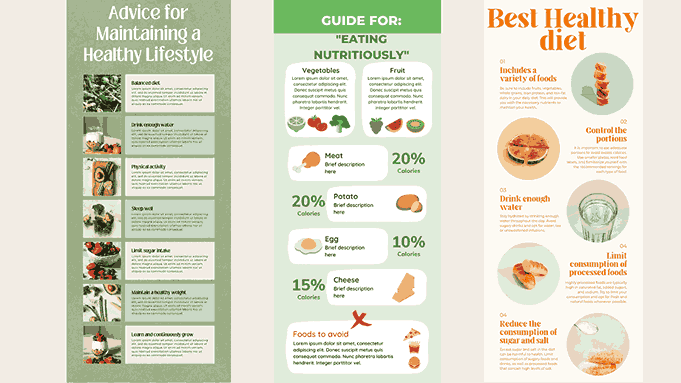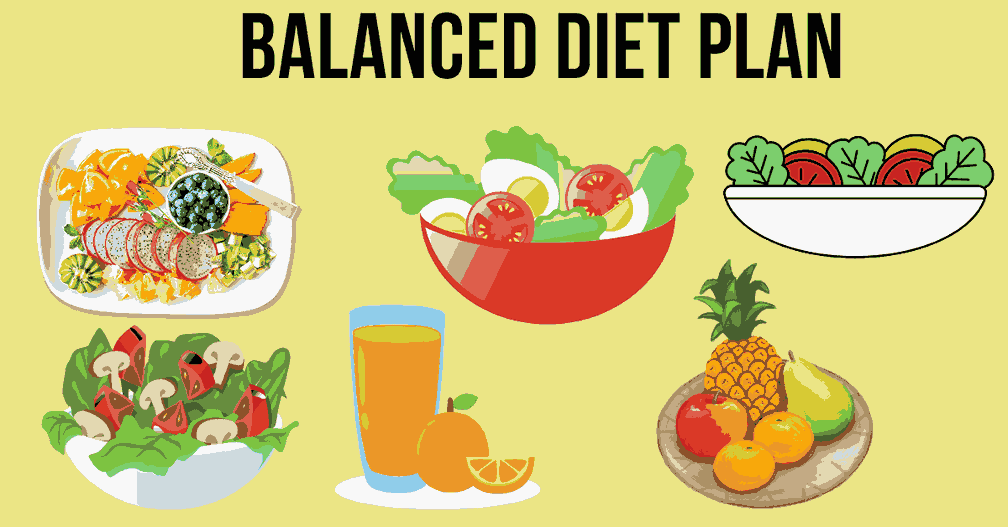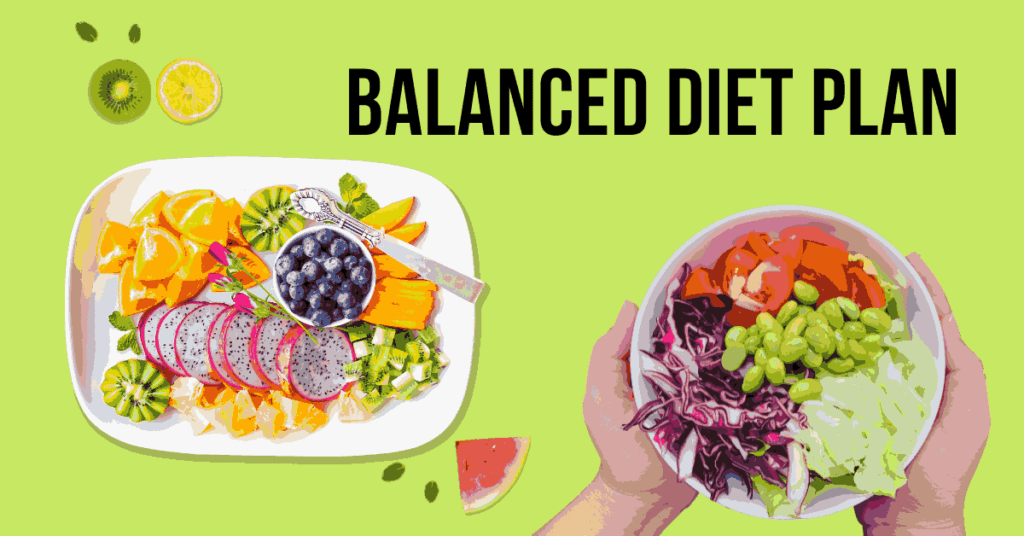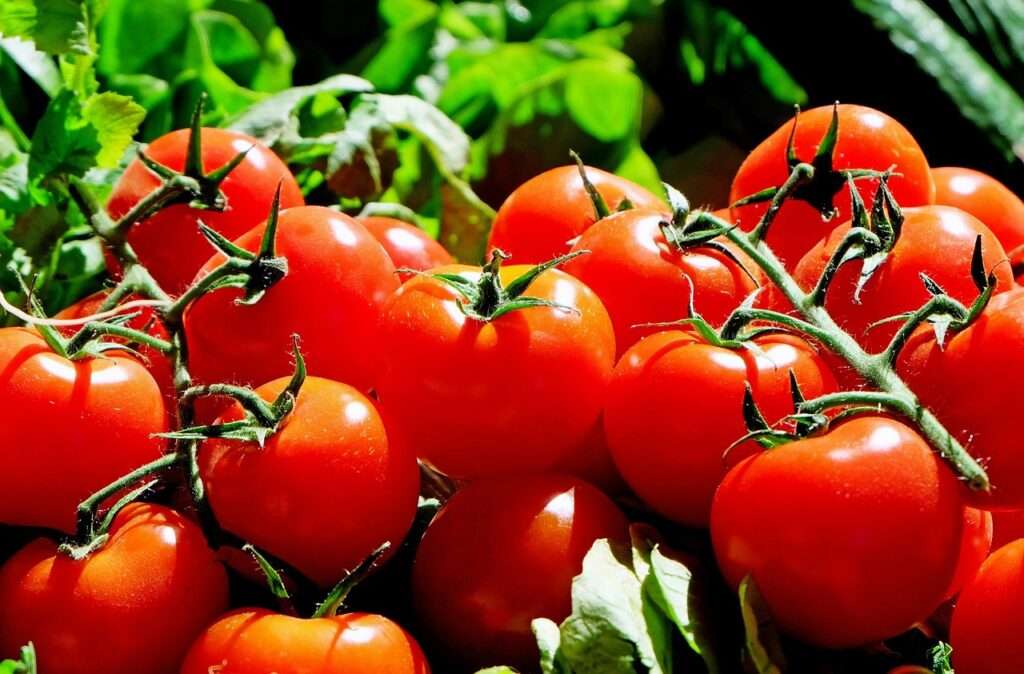Introduction
Ah, the age-old quest for a balanced diet chart – the holy grail of health and wellness. We’ve all been there, scouring the internet for the perfect meal plan, only to be bombarded with countless options and conflicting advice. Fear not, my friends! This comprehensive guide will be your trusty companion on the journey to a well-rounded diet, tailored to your unique needs.
Components of a Balanced Diet Chart
Proteins: The Building Blocks of Life
Let’s kick things off with proteins, the dynamic duo of growth and repair. These mighty macronutrients are essential for building and maintaining our tissues, enzymes, and hormones. Think of them as the construction workers of your body, meticulously reconstructing and fortifying every nook and cranny.
Carbohydrates: The Energy Powerhouse
Carbs often get a bad rap, but fear not – they’re the fuel that keeps your body’s engine running smoothly. These energy-packed molecules are the brain’s favorite snack, providing the necessary oomph for your noggin to function at its peak. Plus, they’re the go-to source of fuel for your muscles, ensuring you can tackle life’s challenges with vigor.
Fats: The Unsung Heroes
Ah, fats – the misunderstood macronutrients that often get a bad rap. But here’s the thing: our bodies need them like a fish needs water. Fats play a crucial role in storing energy, insulating our bodies, and protecting our precious organs. They’re like the cozy blankets of the cellular world, keeping everything snug and toasty.
About Calories: The Energy Currency
While we’re on the topic of macronutrients, let’s not forget about calories – the universal currency of energy. Think of them as the coins you feed into the vending machine of life. Without the proper caloric intake, your body’s engine would sputter and stall, leaving you feeling deflated and drained.

Creating a Healthy Diet Plan for Weight Loss
When it comes to shedding those unwanted pounds, a well-crafted diet plan can be your secret weapon. But let’s be real – not all diet plans are created equal. That’s why we’re going to dive deep into the world of Indian cuisine and explore how to leverage its vibrant flavors and nutrient-dense ingredients to craft a weight loss plan that’s both delicious and effective.
Indian Diet Plan: Spice Up Your Weight Loss Journey
– The beauty of an Indian diet plan lies in its rich tapestry of aromatic spices and flavorful ingredients. From the warmth of cumin and turmeric to the zing of ginger and garlic, these culinary gems not only tantalize your taste buds but also offer a host of health benefits.
– One of the secrets to successful weight loss with an Indian diet plan is its emphasis on plant-based foods. Lentils, chickpeas, and a rainbow of vegetables provide a nutrient-dense foundation that keeps you feeling full and satisfied.
– Don’t underestimate the power of spices in an Indian diet plan for weight loss. Many of these spices, such as cayenne pepper and black pepper, have been shown to boost metabolism and aid in fat burning.
– Embrace the flavors of Indian cuisine by incorporating dishes like dal (lentil stew), vegetable curries, and tandoori-grilled proteins into your meal plan. These flavorful options will keep your taste buds dancing and your waistline shrinking.
Caloric Consumption for Weight Loss: Finding the Sweet Spot
– At the heart of any successful weight loss plan lies the golden rule of calories in versus calories out. To shed those excess pounds, you’ll need to create a caloric deficit by consuming fewer calories than your body burns.
– However, cutting calories too drastically can backfire, leaving you feeling deprived and setting you up for potential burnout. The key is to aim for a moderate calorie deficit of around 300-500 calories per day.
– To calculate your ideal calorie intake for weight loss, start by determining your basal metabolic rate (BMR) – the number of calories your body burns at rest. From there, factor in your activity level and desired rate of weight loss.
– Remember, not all calories are created equal. Focus on nutrient-dense, whole foods that will keep you feeling full and energized, while avoiding empty calories from processed snacks and sugary beverages.
Nutrient Requirements for Effective Weight Management
– Weight loss isn’t just about cutting calories; it’s about nourishing your body with the right nutrients to support your journey. A well-balanced diet should include a variety of vitamins, minerals, and macronutrients.
– Protein is a crucial component of a weight loss diet, as it helps to preserve lean muscle mass and keep you feeling satisfied. Aim for a variety of lean protein sources, such as lentils, chickpeas, tofu, fish, and lean meats.
– Don’t skimp on fiber – it’s your secret weapon for maintaining a feeling of fullness and keeping your digestive system running smoothly. Consume fiber-rich foods including whole grains, fruits, and vegetables.
– Healthy fats, like those found in nuts, seeds, avocados, and fatty fish, are essential for overall health and can even aid in weight loss by promoting satiety and nutrient absorption.
– Staying hydrated is critical when attempting to reduce weight. Aim for at least 8 cups (64 ounces) of water per day, and consider incorporating hydrating foods like cucumbers, watermelon, and tomatoes into your diet.
By embracing the flavors of an Indian diet plan, understanding caloric consumption, and meeting your nutrient requirements, you’ll be well on your way to achieving your weight loss goals in a sustainable and enjoyable manner. Remember, sustainable weight loss is a journey, not a sprint – so buckle up, embrace the flavors, and enjoy the ride!
Creating a Healthy Diet Plan for Weight Gain
Indian Diet Plan: Bulk Up with Flavor
For those seeking to pack on some extra muscle or regain lost weight, an Indian diet plan can be your secret weapon. With its rich array of flavors and nutrient-dense ingredients, you’ll be able to bulk up without sacrificing taste or variety. Prepare to embrace the art of mindful feasting, where every bite is a celebration of flavor and nourishment.
Weight Gain Diet Plan: Nourishing Your Growth
Gaining weight in a healthy manner is an art form, and we’re here to be your personal Picassos. We’ll guide you through the process of crafting a diet plan that supports your growth goals, incorporating nutrient-dense foods that will fuel your body’s transformation without compromising your well-being.
Healthy Diet Plan: The Balancing Act
Weight gain doesn’t have to mean sacrificing your health. In fact, we’ll show you how to create a diet plan that nourishes your body from the inside out, striking the perfect balance between caloric intake and nutrient density. Prepare to embrace a holistic approach to eating, where every bite is a celebration of your journey towards a stronger, healthier you.

Meal Planning and Nutrient Goals
Meal Planning: The Art of Culinary Mastery
Meal planning is the secret sauce that brings your balanced diet chart to life. Think of it as a well-choreographed dance, where every ingredient plays its part in creating a harmonious whole. We’ll guide you through the art of meal planning, helping you craft delicious and nutritious meals that keep your taste buds and your body happy.
Importance of Consulting a Nutritionist for Diet Plan Customization
While we can provide you with the blueprint, every body is a unique masterpiece that deserves personalized attention. That’s why we highly recommend consulting with a nutritionist to fine-tune your diet plan to your specific needs and goals. These culinary wizards have the expertise to tailor your meal plan to your individual quirks and preferences, ensuring you’ll stick to your diet like a moth to a flame.
Choosing the Right Foods for Your Balanced Diet Chart
Foods to Include in a Balanced Diet Chart: A Cornucopia of Deliciousness
When it comes to crafting a balanced diet chart, the secret lies in embracing a diverse array of foods. We’re talking colorful fruits and veggies, whole grains that pack a nutritious punch, lean proteins that keep you feeling satisfied, and healthy fats that add depth and flavor to every bite.
Healthy Sources of Carbohydrates: The Complex Carb Conundrum
Ah, carbs – the oft-misunderstood macronutrient. But fear not, we’re here to demystify the complex carb conundrum. We’ll introduce you to a world of whole grains, starchy veggies, and fiber-rich fruits that will keep you feeling energized and satisfied, without the dreaded sugar crashes.
Protein Sources in a Balanced Diet Chart: The Mighty Muscle Builders
Proteins are the rock stars of the nutrient world, and we’re here to help you find the best sources to fuel your body’s growth and repair. From lean meats and fish to plant-based powerhouses like legumes and nuts, we’ll guide you through the maze of protein options, ensuring you get all the essential amino acids your body craves.
Sources of Healthy Fats: The Flavor Enhancers
Fats often get a bad rap, but we’re here to dispel the myths and show you the delicious side of these misunderstood macronutrients. We’ll introduce you to a world of healthy fats like avocados, nuts, and olive oil, that not only nourish your body but also add depth and richness to every bite.
Incorporating Exercise for Optimal Results
Exercise Routine for Weight Loss: The Secret Weapon
Let’s be real: a balanced diet chart is just one piece of the puzzle when it comes to achieving your weight loss goals. Enter exercise, the secret weapon that will supercharge your journey and help you shed those unwanted pounds with gusto.
Incorporating Exercise into the Diet Plan: A Holistic Approach
Fitness and nutrition go hand-in-hand like peanut butter and jelly. That’s why we’ll guide you through the art of incorporating exercise into your diet plan, creating a holistic approach that nourishes your body from the inside out. Whether it’s hitting the gym, going for a brisk walk, or trying your hand at yoga, we’ll help you find the perfect blend of physical activity that complements your dietary goals.

Maintaining Hydration and Avoiding Unhealthy Foods
Importance of Hydration: The Elixir of Life
Water, the elixir of life, is often overlooked in our pursuit of a balanced diet chart. But trust us, my friends, staying hydrated is crucial for your body’s optimal functioning. Think of it as the lubricant that keeps your cellular machinery running smoothly, flushing out toxins and transporting nutrients to every nook and cranny.
Recommended Water Intake for a Balanced Diet Chart
So, how much water should you be guzzling down? While the exact amount varies from person to person, a general rule of thumb is to aim for at least 8 glasses (or roughly 2 liters) per day. But don’t just take our word for it – listen to your body’s cues, and drink up whenever you feel thirsty or notice that your urine is a little too yellow for comfort.
Foods to Avoid in a Balanced Diet Chart: The Dietary Saboteurs
Now, let’s address the elephant in the room – those tempting, unhealthy foods that seem to lurk around every corner, beckoning us with their siren call of deliciousness. We’re talking about the usual suspects: processed snacks, sugary drinks, and fast food that’s more grease than substance.
Impact of Unhealthy Foods on Health: The Silent Saboteurs
While an occasional indulgence won’t derail your progress, overconsumption of these dietary saboteurs can have serious consequences for your health. From contributing to weight gain and increasing your risk of chronic diseases, to sapping your energy levels and leaving you feeling sluggish, these foods can be a real party pooper for your overall well-being.
Lifestyle Approach to Sustaining a Balanced Diet Chart
Healthy Lifestyle: The Secret Sauce
Maintaining a balanced diet chart isn’t just about the food on your plate – it’s a holistic lifestyle approach that encompasses everything from your mindset to your daily habits. Think of it as a symphony, where each aspect of your life plays a harmonious tune, contributing to your overall health and well-being.
Meeting Nutrition Needs Through a Balanced Diet Chart
At the core of this lifestyle approach lies your balanced diet chart, the conductor that orchestrates the symphony of nutrients your body needs to thrive. By making mindful choices and embracing a diverse array of whole, nutrient-dense foods, you’ll be providing your body with the fuel it needs to function at its best.

Conclusion
As we reach the end of our journey, let’s take a moment to reflect on the power of a balanced diet chart. It’s more than just a meal plan; it’s a blueprint for nourishing your body, mind, and soul. By embracing the principles we’ve discussed, you’ll be well on your way to achieving optimal health, vitality, and a deep sense of well-being.
Remember, this is not a sprint, but rather a marathon. Celebrate your progress, enjoy the journey, and don’t be afraid to seek guidance from professionals when you need it. With dedication, patience, and a little bit of fun, you’ll soon find yourself living your best life, fueled by the power of a balanced diet chart that’s tailored just for you.
So, what are you waiting for? It’s time to embark on this transformative adventure and unveil the secrets to a balanced diet chart that will nourish your body, delight your taste buds, and leave you feeling like the radiant, vibrant being you were meant to be.
FAQs:
How do I determine the right calorie intake for my weight loss goals?
To determine your ideal calorie intake for weight loss, start by calculating your basal metabolic rate (BMR) using a BMR calculator or formula based on your age, gender, height, and weight. This gives you an estimate of the calories your body burns at rest. Then, multiply your BMR by an activity factor based on your average daily activity level (sedentary, lightly active, moderately active, or very active). The resulting number is your total daily energy expenditure (TDEE). To lose weight, aim for a calorie deficit of 300-500 calories below your TDEE.
Can I still enjoy my favorite foods while following a balanced diet chart?
Absolutely! The trick is to be moderate and regulate your portion sizes. Rather than eliminating your favorite foods entirely, aim to incorporate them into your diet chart in reasonable portions. You can also explore healthier alternatives or substitutions that satisfy your cravings without derailing your progress. Remember, a balanced diet chart should be sustainable and enjoyable, not restrictive.
How important is exercise when it comes to weight loss?
Exercise is an essential component of any successful weight loss program. While a balanced diet chart is crucial for creating a calorie deficit, regular physical activity helps to boost your metabolism, build lean muscle mass, and support overall health. Aim for a combination of cardio and strength training exercises to maximize your results and ensure a well-rounded fitness routine.
Can a balanced diet chart help with specific health conditions?
Yes, a balanced diet chart can be tailored to address specific health concerns such as diabetes, high blood pressure, or digestive issues. By focusing on nutrient-dense, whole foods and limiting processed or high-risk ingredients, a balanced diet chart can support better management of various health conditions. It's always advisable to consult with a healthcare professional or registered dietitian to develop a customized plan that meets your specific needs.
How can I stay motivated and consistent with my balanced diet chart?
Staying motivated and consistent with a balanced diet chart can be challenging, but there are several strategies that can help. First, make sure your diet chart is realistic and aligns with your personal preferences and lifestyle. Second, focus on progress, not perfection – celebrate small wins along the way. Third, enlist the support of friends or family members who can encourage and hold you accountable. Finally, remember to be patient and kind to yourself – sustainable change takes time and effort.




